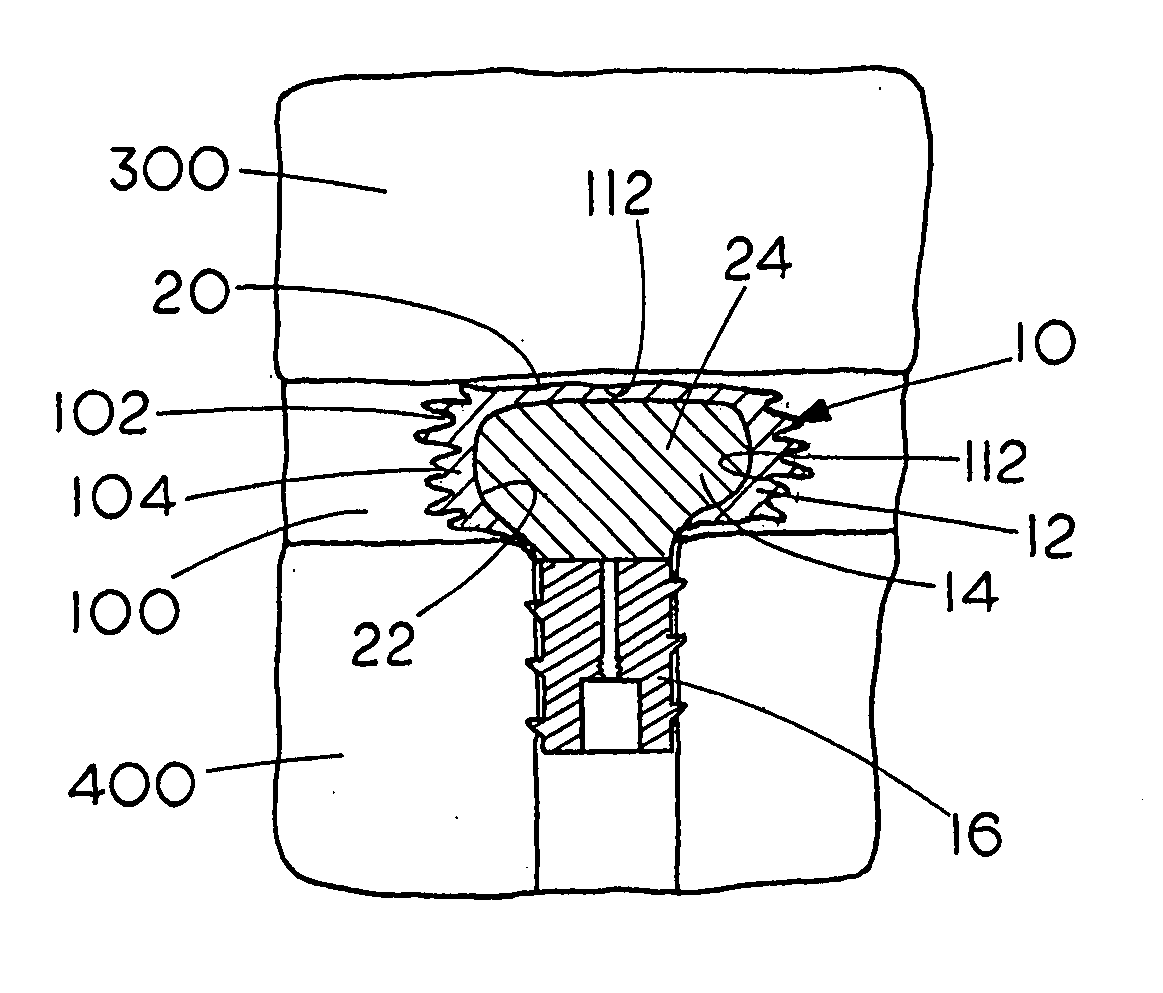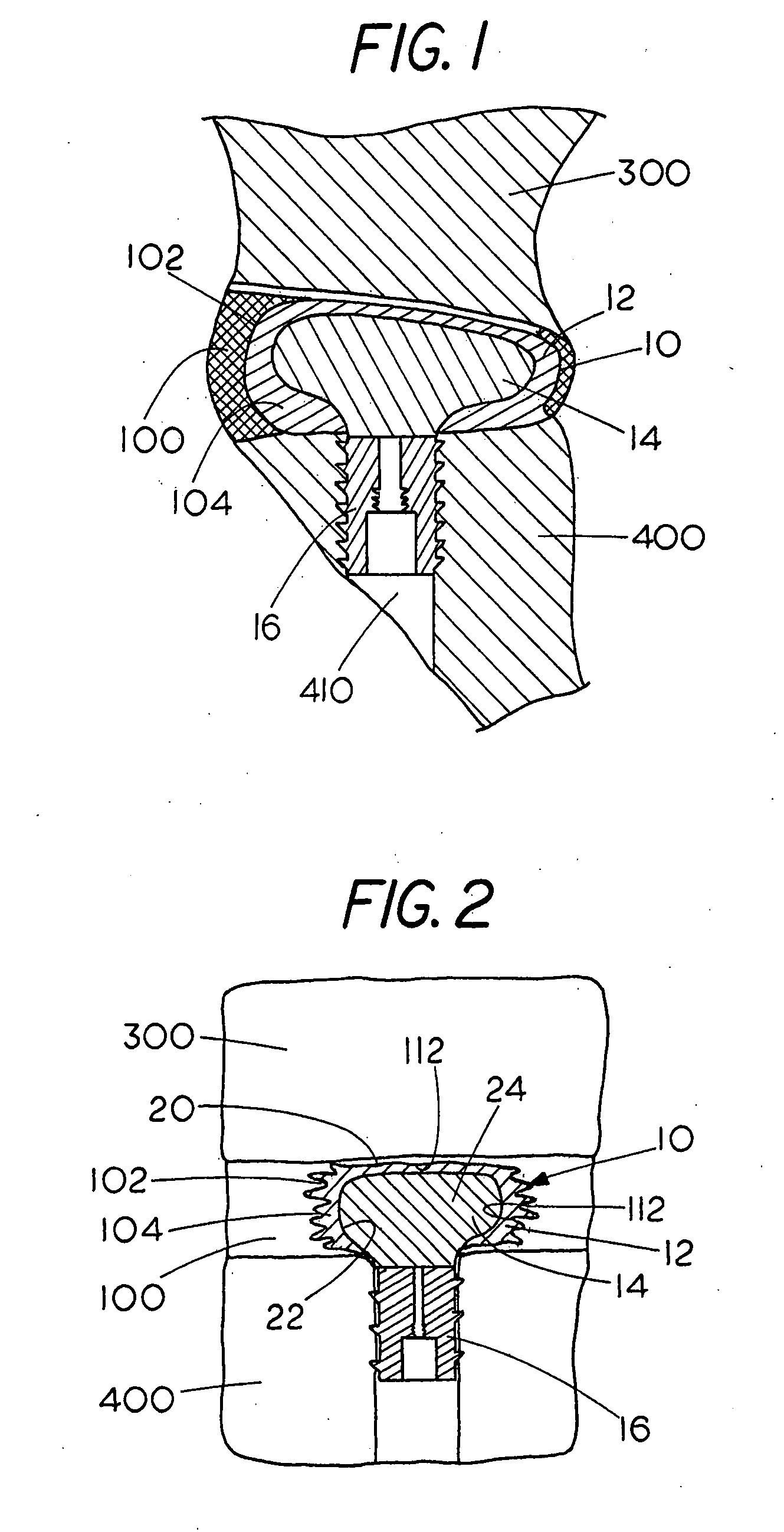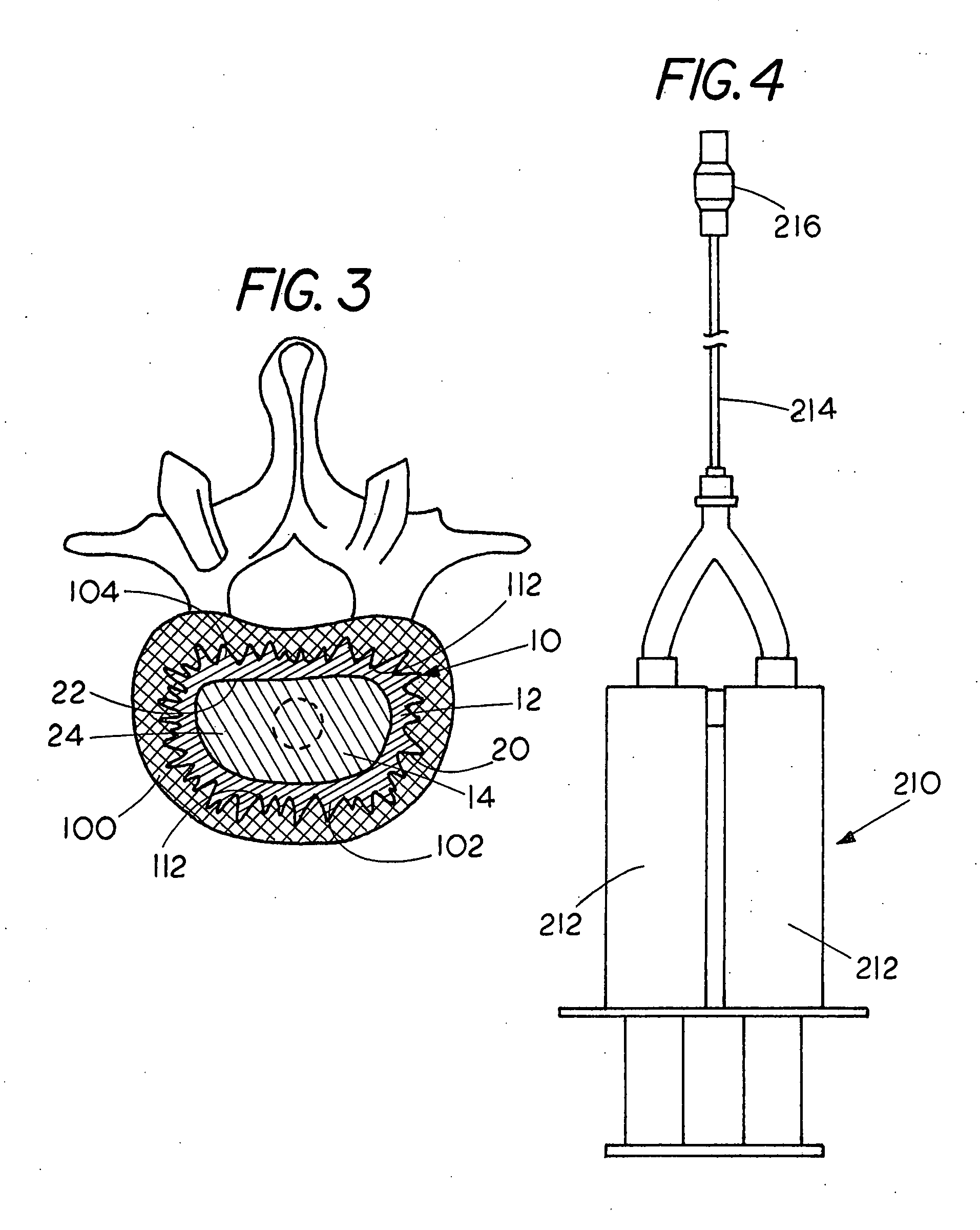Prosthetic nucleus apparatus and method
a technology of prosthetic nucleus and nucleus, which is applied in the direction of prosthesis, osteosynthesis devices, spinal implants, etc., can solve the problems of reducing the efficiency so as to achieve the function facilitate pain relief, and restore the height of the intervertebral dis
- Summary
- Abstract
- Description
- Claims
- Application Information
AI Technical Summary
Benefits of technology
Problems solved by technology
Method used
Image
Examples
Embodiment Construction
[0051] Embodiments of prosthetic nucleus apparatus 10 and delivery apparatus 210 and their components for introduction of a prosthetic nucleus apparatus 10 are generally illustrated throughout the figures. A prosthetic nucleus apparatus 10 in accordance with the present invention is configured to be positioned within a de-nucleuated space 104 within an intervertebral disc 100. In one aspect, the prosthetic nucleus apparatus 10 is configured to at least in part replace at least one function of the native nucleus pulposus. Prosthetic nucleus apparatus 10 generally includes a barrier sealant membrane 12 and a prosthetic nucleus material 14. In an aspect of the present invention, a plug 16 may also be provided. The prosthetic nucleus apparatus 10 is positioned within the de-nucleated space 104 and will typically exert a force against the vertebral end plate of superior vertebral body 300 and a vertebral end plate of the inferior vertebral body 400 adjacent to the intervertebral disc 100...
PUM
| Property | Measurement | Unit |
|---|---|---|
| elongation | aaaaa | aaaaa |
| elongation | aaaaa | aaaaa |
| compressive strength | aaaaa | aaaaa |
Abstract
Description
Claims
Application Information
 Login to View More
Login to View More - R&D
- Intellectual Property
- Life Sciences
- Materials
- Tech Scout
- Unparalleled Data Quality
- Higher Quality Content
- 60% Fewer Hallucinations
Browse by: Latest US Patents, China's latest patents, Technical Efficacy Thesaurus, Application Domain, Technology Topic, Popular Technical Reports.
© 2025 PatSnap. All rights reserved.Legal|Privacy policy|Modern Slavery Act Transparency Statement|Sitemap|About US| Contact US: help@patsnap.com



